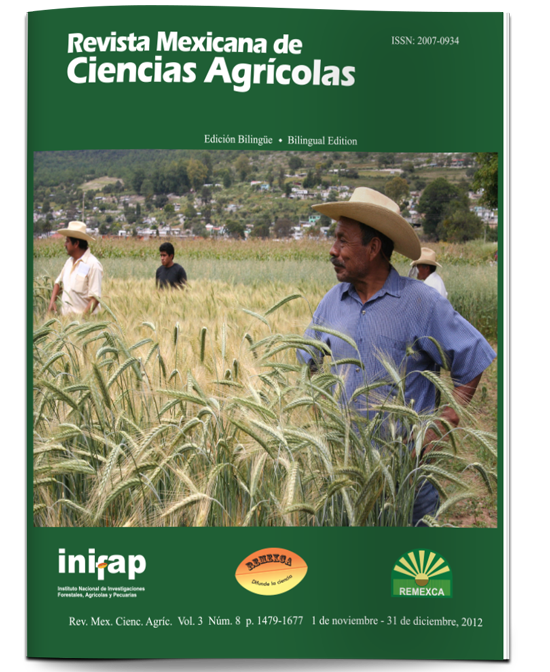Responses of Antirrhinum majus (L.) for cut f lowers to the osmotic potential of a nutrient solution in two growing seasons
DOI:
https://doi.org/10.29312/remexca.v4i8.1129Keywords:
greenhouse crops, floriculture, hydroponics, nutritionAbstract
Due to the limited information for hydroponic production of snapdragon (Antirrhinum majus L.) more research is required for the proper management of this species. In this study, a summer material (group IV) Potomac series cv. Rose was used to determine the effects of the osmotic potential (OP) in the nutrient solution (-0.036, -0.054, -0.072, -0.090 and -0.108 MPa) on biomass and commercial quality in winter and summer crops. In general, most of the evaluated variables such as biomass, vase life, days to harvest, and leaf area were affected by the PO and the growing season. The total biomass was higher in winter compared to summer (20 and 12 g/plant respectively), solutions with -0.072 and -0.090 MPa, in winter, and -0.036 MPa in the summer, which allowed higher accumulation of biomass. The days to harvest increased from 25-40 days in the winter than in the summer, while increasing vase life 5 days. The quality of the Society of American Florists (SAF) was lower in the winter because the stem did not reach the required standard, being classified as sophisticated. In the summer all got better quality treatments (special). In general, the plants grown in the summer showed a tendency to decrease the biomass as the PO solution got negative; suggesting that at this station requires less concentrated nutrient solutions. In the winter, biomass tended to increase slightly to raise the PO of -0036 to -0072 and -0090 MPa, suggesting that in this season the solutions for the optimal growth of the plants should be more concentrated.
Downloads
Downloads
Published
How to Cite
Issue
Section
License
The authors who publish in Revista Mexicana de Ciencias Agrícolas accept the following conditions:
In accordance with copyright laws, Revista Mexicana de Ciencias Agrícolas recognizes and respects the authors’ moral right and ownership of property rights which will be transferred to the journal for dissemination in open access. Invariably, all the authors have to sign a letter of transfer of property rights and of originality of the article to Instituto Nacional de Investigaciones Forestales, Agrícolas y Pecuarias (INIFAP) [National Institute of Forestry, Agricultural and Livestock Research]. The author(s) must pay a fee for the reception of articles before proceeding to editorial review.
All the texts published by Revista Mexicana de Ciencias Agrícolas —with no exception— are distributed under a Creative Commons License Attribution-NonCommercial 4.0 International (CC BY-NC 4.0), which allows third parties to use the publication as long as the work’s authorship and its first publication in this journal are mentioned.
The author(s) can enter into independent and additional contractual agreements for the nonexclusive distribution of the version of the article published in Revista Mexicana de Ciencias Agrícolas (for example include it into an institutional repository or publish it in a book) as long as it is clearly and explicitly indicated that the work was published for the first time in Revista Mexicana de Ciencias Agrícolas.
For all the above, the authors shall send the Letter-transfer of Property Rights for the first publication duly filled in and signed by the author(s). This form must be sent as a PDF file to: revista_atm@yahoo.com.mx; cienciasagricola@inifap.gob.mx; remexca2017@gmail.
This work is licensed under a Creative Commons Attribution-Noncommercial 4.0 International license.



